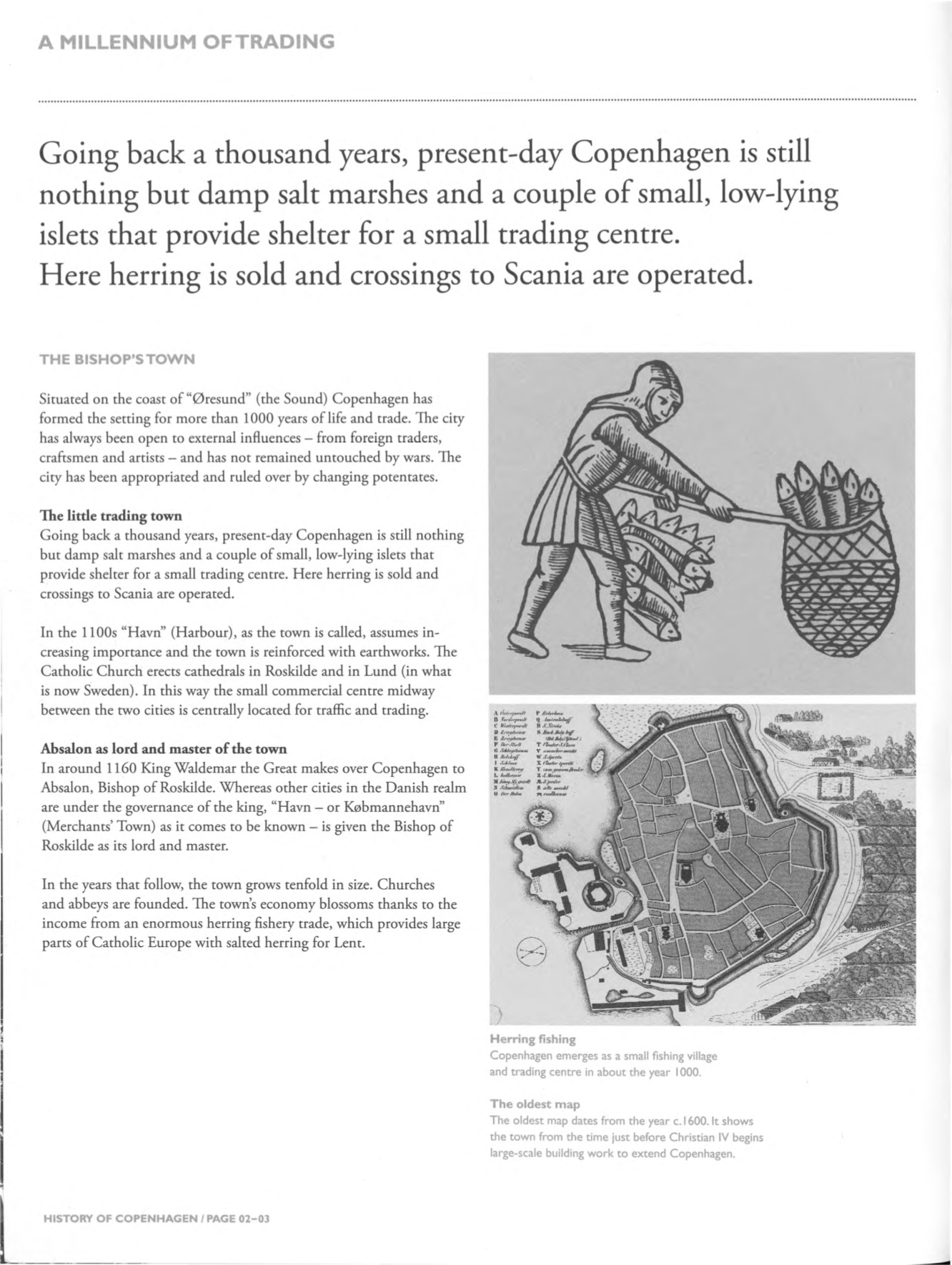

A MILLENNIUM OF TRADING
Going back a thousand years, present-day Copenhagen is still
nothing but damp salt marshes and a couple of small, low-lying
islets that provide shelter for a small trading centre.
Here herring is sold and crossings to Scania are operated.
THE B ISHOP’STOW N
Situated on the coast of “Øresund” (the Sound) Copenhagen has
formed the setting for more than 1000 years o f life and trade. The city
has always been open to external influences - from foreign traders,
craftsmen and artists - and has not remained untouched by wars. The
city has been appropriated and ruled over by changing potentates.
The little trading town
Going back a thousand years, present-day Copenhagen is still nothing
but damp salt marshes and a couple of small, low-lying islets that
provide shelter for a small trading centre. Here herring is sold and
crossings to Scania are operated.
In the 1100s “Havn” (Harbour), as the town is called, assumes in
creasing importance and the town is reinforced with earthworks. The
Catholic Church erects cathedrals in Roskilde and in Lund (in what
is now Sweden). In this way the small commercial centre midway
between the two cities is centrally located for traffic and trading.
Absalon as lord and master of the town
In around 1160 King Waldemar the Great makes over Copenhagen to
Absalon, Bishop of Roskilde. Whereas other cities in the Danish realm
are under the governance of the king, “Havn - or Købmannehavn”
(Merchants’ Town) as it comes to be known —is given the Bishop of
Roskilde as its lord and master.
In the years that follow, the town grows tenfold in size. Churches
and abbeys are founded. The town’s economy blossoms thanks to the
income from an enormous herring fishery trade, which provides large
parts of Catholic Europe with salted herring for Lent.
H erring fishing
Copenhagen emerges as a small fishing village
and trading centre in about the year 1000.
Th e oldest map
The oldest map dates from the year c. 1600. It shows
the town from the time just before Christian IV begins
large-scale building w ork to extend Copenhagen.
HISTORY OF COPENHAGEN / PAGE 02-03
















